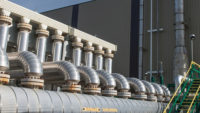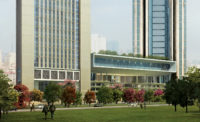The global manufacturing sector continues to offer a wide range of design and construction opportunities, despite varying pressures that range from worldwide declining prices for oil and other commodities to the continued cooling of China’s economy.
|
Related Link:
Global Sourcebook PDF |
The International Monetary Fund’s October 2015 World Economic Outlook projected global growth for this year at 3.1%—slightly lower than earlier forecasts. The report predicts that advanced economies, such as western Europe’s, will gradually gain momentum, while larger emerging markets will face another year of slowing activity.
Nevertheless, several industries—among the largest of which is automobile manufacturing—appear to transcend geographic boundaries and trends.
Mitsubishi Rayon Co. is constructing a new plant in Germany that will produce up to 1,000 metric tons annually of composite materials for use in vehicles, while new investments by British carmakers
Jaguar and Aston Martin are expected to fuel a 33% increase, to 2 million vehicles annually, in domestic production by 2020.
Mexico also is attracting manufacturing activity to support the robust North American market. Already producing more than 3 million vehicles a year, the country is reportedly about to add a new Daimler AG-Nissan joint production plant. Further, Michigan-based thermal management company Gentherm recently announced plans for a new 140,000-sq-ft plant to produce seat-comfort and industrial products.
China likewise continues to attract automotive investment from the U.S. Tesla announced plans to produce its Model 3 there, while Ford is ramping up its research-and-development efforts for the Chinese market.
Pharmaceuticals also are spurring new projects around the globe. Con Murphy, global sector director for advanced manufacturing for Dublin-based PM Group, reports that strong activity in Ireland, Great Britain, Belgium and Singapore will continue, with “a number of new company players coming into the market with significant investment plans,” including several U.S.-led multinational firms.
Murphy also sees a trend toward continued increased investment in infant nutrition in Europe, Australia and New Zealand to supply the Chinese market, along with evidence of continued strong investment in the food business across Asia, generally. “As disposable incomes increase in emerging markets, we see continued investment in added-value food facilities by the major international brands,” he adds, noting that the growing industry sophistication in these regions creates “a further trend for the development of the support industries in specialty-food ingredients and flavors.”
Just as important as the markets are the types of facilities that are being built, according to Tjerk van der Meer, global sector leader for Arcadis N.V., Amsterdam. Examples can be found across
Europe and Africa as manufacturers increasingly consolidate or relocate assets.
“Twenty years ago, we would design a facility for a single purpose, with flexibility only for expansion,” van der Meer explains. “Now, facilities have to be more flexible and agile to respond to market changes, especially if they are making multiple products, such as food and beverage or technology.”
Facility flexibility also plays into manufacturers’ sustainability efforts, which require their design and construction
consultants to be current with technologies that maximize production efficiency and reliability and reduce resource use—a critical concern in areas in which water and other critical production reserves are in short supply.
“Sustainability … is present in pretty much all of our projects, as are digitalization and information management,” notes Thomas Fogelström, manufacturing-sector business manager for Sweco AB, Stockholm, which now is working with a Swedish technology provider on a new production line, as well as automotive test facilities. “Energy efficiency and safe operations have been important focus areas when developing new solutions.”






Post a comment to this article
Report Abusive Comment